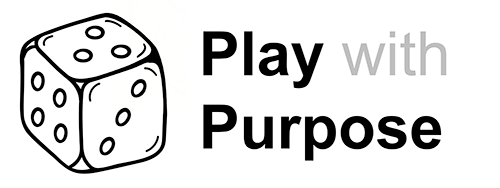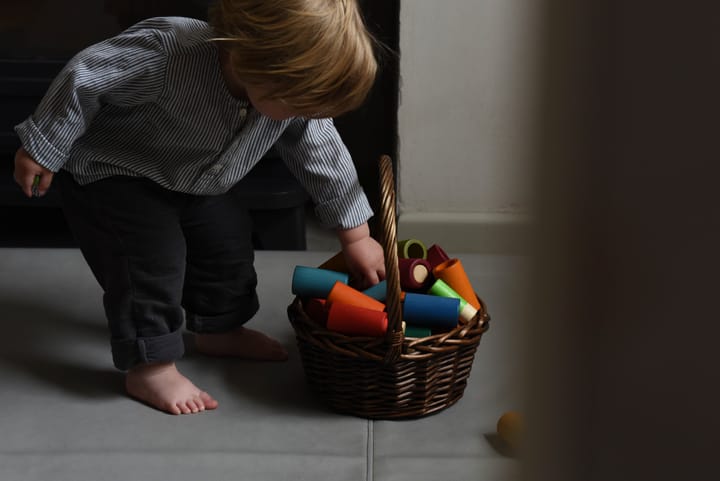When schemas disappear: How your child’s play evolves after five
Wondering why your five-year-old no longer engages in repetitive play? It’s all about schema integration. Learn how these early play patterns evolve into mental frameworks, helping your child approach problem-solving, maths, and more abstract ideas. Schema play hasn’t disappeared—it’s transformed!

Wondering why your five-year-old no longer plays the same way? It's all about schema integration.
Are you wondering why your five-year-old no longer engages in the same repetitive play? Perhaps they’ve stopped endlessly stacking blocks or pouring water back and forth. Don’t worry—this change is completely normal and signals an important stage in their development. What you’re seeing is not the disappearance of schemas but their transformation. Let’s explore how your child’s play is evolving and what this means for their learning journey.
What are schemas and why are they important?
Schemas are patterns of repeated behaviour that children naturally engage in during their early years. You’ve likely noticed your child repeating actions like throwing objects, wrapping things up, or building and knocking down towers. These seemingly simple behaviours help children make sense of the world. Through schemas, they learn about concepts such as balance, cause and effect, and spatial awareness. For instance:
- Trajectory schema. Throwing or pushing objects to explore movement and direction.
- Enveloping schema. Wrapping objects or themselves to understand boundaries and containment.
- Rotation schema. Spinning wheels or objects to investigate circular motion.
In children under five, these schemas are vital for hands-on learning and cognitive development. They repeat actions to build mental connections, which form the foundation for more complex thinking.
Why does schema play fade?
Around the age of five, you might notice that the repetitive actions associated with schemas seem to fade. This is because, by this age, many schemas have already been integrated into your child’s thinking. The hands-on exploration that was once essential for understanding the world is no longer needed in such an obvious way.
For example, a child who once poured water from one container to another may now grasp concepts like volume and measurement without needing to physically repeat the action. They’ve internalised what they learned through play and are now applying it to more abstract ideas. In other words, schema play hasn’t disappeared—it has evolved into a more advanced form of thinking.
The evolution of schemas
As children grow, the knowledge gained from schema play becomes part of their mental frameworks. These frameworks influence how they approach problem-solving, math, science, and even social interactions.
Take building blocks as an example. A child who repeatedly stacked blocks to understand balance might now use that knowledge to build complex Lego models or to grasp engineering concepts like how a bridge works. They no longer need to physically explore balance—they can now think about it abstractly.
This shift from hands-on exploration to mental application is a significant developmental milestone. It marks the transition from learning through doing to learning through thinking, and it opens the door to more complex and creative problem-solving skills.
A contrarian view: schemas are still present, just harder to see
Some parents worry that as their child moves away from schema play, they may be missing out on important learning opportunities. But the truth is, schemas are still very much at work. They’ve simply become less visible because they are now part of your child’s internal thought processes. The mental patterns that your child developed during their early years are still guiding them as they encounter new challenges, whether in school or in social settings.
Instead of looking for obvious signs of schemas, watch for how your child applies the concepts they’ve learned. Whether they’re building a tower out of blocks or solving a tricky puzzle, they’re still drawing on the mental frameworks formed through years of schema play.
Schemas are often associated with toddlers, but their importance doesn’t end at age five. They lay the groundwork for more complex thinking later on. When your child moves on from physically repeating actions, it’s easy to think they’ve outgrown schemas, but really, they’ve internalised them. What used to be visible in their play is now driving their ability to think critically, solve problems, and understand abstract ideas. As parents, we need to recognise and support this shift.
1. Jigsaw puzzles. Encourage your child to solve puzzles that require them to apply early schema concepts like rotation (turning pieces to fit).
2. Building challenges. Create tasks where your child has to use balance and problem-solving, like building towers or bridges.
3. Exploring nature. Point out real-world examples of schemas, like the trajectory of a stream or the rotation of a wheel.
1. Stop expecting immediate results. Allow your child time to process their thoughts and apply their knowledge in their own way, without rushing them.
FAQs
1. Is it normal for my child to stop engaging in repetitive play?
Yes, it’s completely normal. As your child grows, they begin to integrate the knowledge they gained from schema play into their thought processes. They may not need to repeat actions physically anymore, but they are still applying what they’ve learned in more abstract ways.
2. How can I help my child continue learning through play?
Encourage problem-solving activities, creative building, and free exploration. Ask open-ended questions to help your child think critically and apply their knowledge to new situations.
3. Will my child still develop if they don’t engage in schema play anymore?
Absolutely! Schema play naturally fades as your child matures. They will continue to develop through more complex thinking, problem-solving, and abstract learning, all of which are built on the foundation of their earlier schema experiences.
Final word
The disappearance of repetitive schema play in children around the age of five doesn’t mean they’ve stopped learning through play. Rather, they are now using the concepts they learned in more sophisticated ways, applying them to new challenges and ideas. By supporting this transition and offering opportunities for problem-solving and exploration, you can help your child build on the strong foundation they’ve developed during their early years.
Share your thoughts in the comments below, and don’t forget to subscribe for more insights into your child’s learning journey.




Comments ()